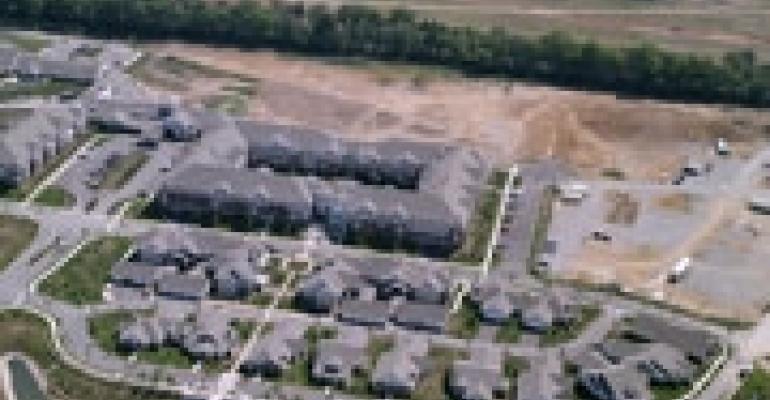
A $1 billion building boom in continuing care retirement communities has investors taking a fresh look at this product niche as consumers warm up to the concept of paying a hefty entry fee in exchange for the security of knowing where they'll live out the rest of their lives.
"We're getting more calls from market participants who want to explore continuing care," says Daniel Hermann, managing director and group head of senior living finance at Ziegler Capital Markets in Chicago. "Investors see others having success."
Returns on stabilized properties typically run 20%, or higher, industry sources say. That has for-profit companies ramping up new projects in a category that has been dominated by non-profit owners and operators.
Continuing care communities feature several levels of housing, along with hotel-style amenities and services. Most units are geared for independent seniors, but the campuses also include assisted living and nursing care. Residents pay an entry fee, which typically ranges from about $200,000 to more than $1 million, depending on the project. Nowadays fees are usually at least partially refundable. Residents also typically pay a monthly fee of several thousand dollars.
The projects are geared toward affluent retirees. Most residents pay the big entry fee with the proceeds from the sale of a house. Entry fees are typically pegged to local home values.
About 20 big new campuses are currently under way, according to Ziegler's Hermann. A new campus today costs anywhere from about $70 million to $150 million, he estimates. (Amsterdam Harborside, Long Island, NY, is expected to cost more than $250 million.)
About 80% of continuing care campuses are owned by non-profit entities, in many cases groups affiliated with a church. For-profit developers have shied away from continuing care, preferring rental buildings that generate a return on investment in about 18 months.
Five to seven years is the return horizon at continuing care projects. Several years of pre-development work often is required. Marketing is a two-year process during which deposits on units are collected. Lenders typically require 70% of the units to be reserved before construction can begin.
Continuing care projects also feature high barriers to entry. Sites for a high-rise or large campus are difficult to find. And licensing for the assisted and nursing care units can be difficult to obtain.
Even so, some for-profit operators are finding success. Classic Residence by Hyatt has 11 campuses either open or under way. Erickson Retirement Communities has 20 campuses. A small, and growing, number of local for-profit operators are developing projects, too.
Life Care Services is making a big push into continuing care. The for-profit company, which is privately held, is employee-owned. Life Care opened a new campus last May in Brentwood, Tenn., near Nashville. A campus will open in February 2008 in Issaquah, Wash., near Seattle.
Life Care plans to start construction on a project in Phoenix next month. The company also has an option on land for a new project in Plymouth Minn., near Minneapolis. Life Care entry fees average about $500,000, and monthly fees about $3,000.
Besides developing and managing its own properties, Life Care also manages about 60 continuing care communities for non-profit organizations. "We see continuing care as a real opportunity," says Joel Nelson, executive vice president at Des Moines, Iowa-based Life Care.
Nelson explains that the company generates fee income by acting as its own developer. The company can also sell its health care services at Life Care properties. More importantly, the company owns and controls the underlying real estate. "We take a long-term perspective," says Nelson.
The campuses generate an internal rate of return well in excess of 20%, Nelson says. But, he notes, a project takes five years to develop. “There's definitely more risk with a continuing care campus, but there are more rewards, too.”
Another risk today is the housing market. The slump may make it difficult for owners to sell their homes. Or it may be difficult for homeowners to sell at a price high enough to pay a big entry fee. Hermann of Ziegler Capital Markets is closely monitoring the turbulence. "We are watching home sales.”

